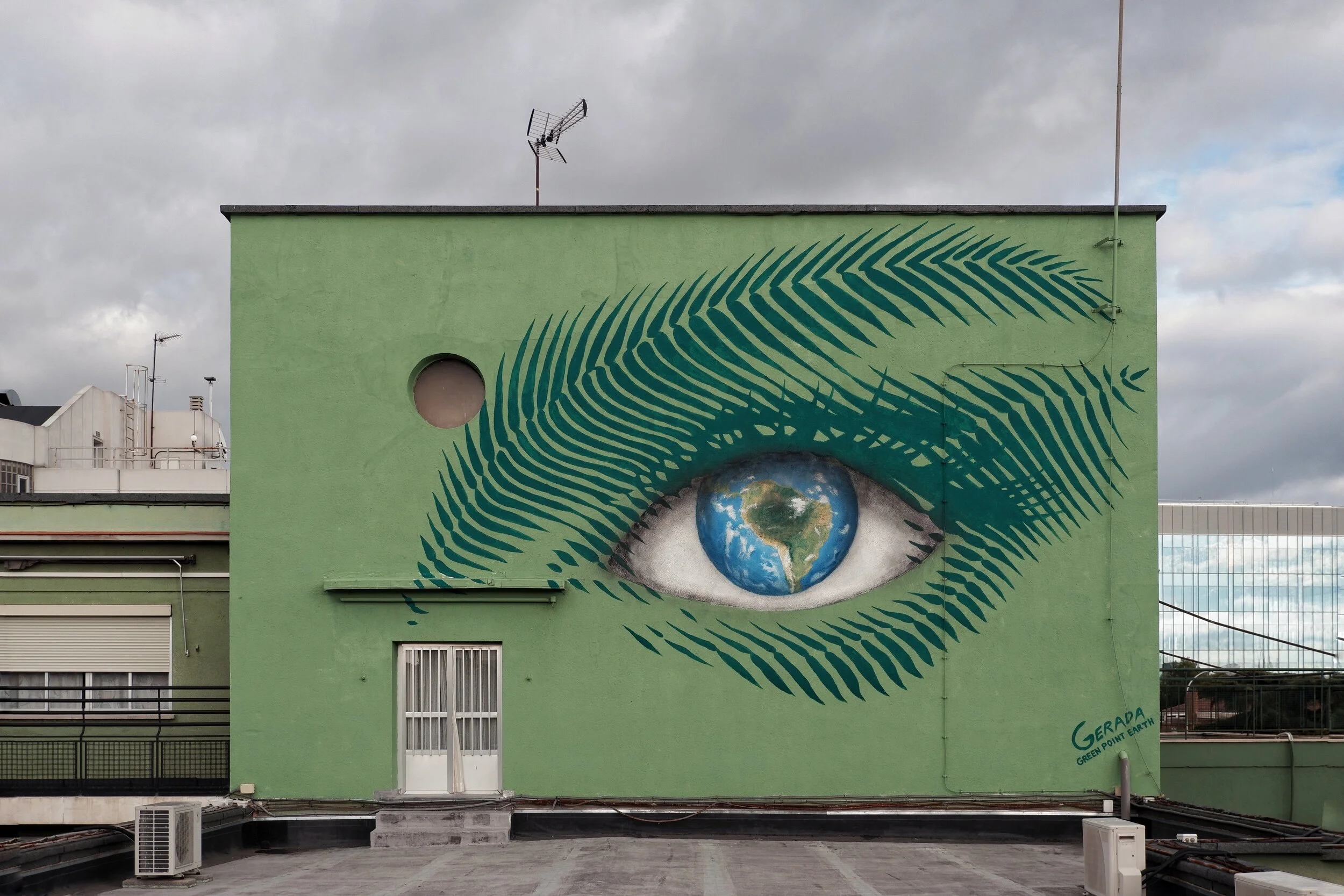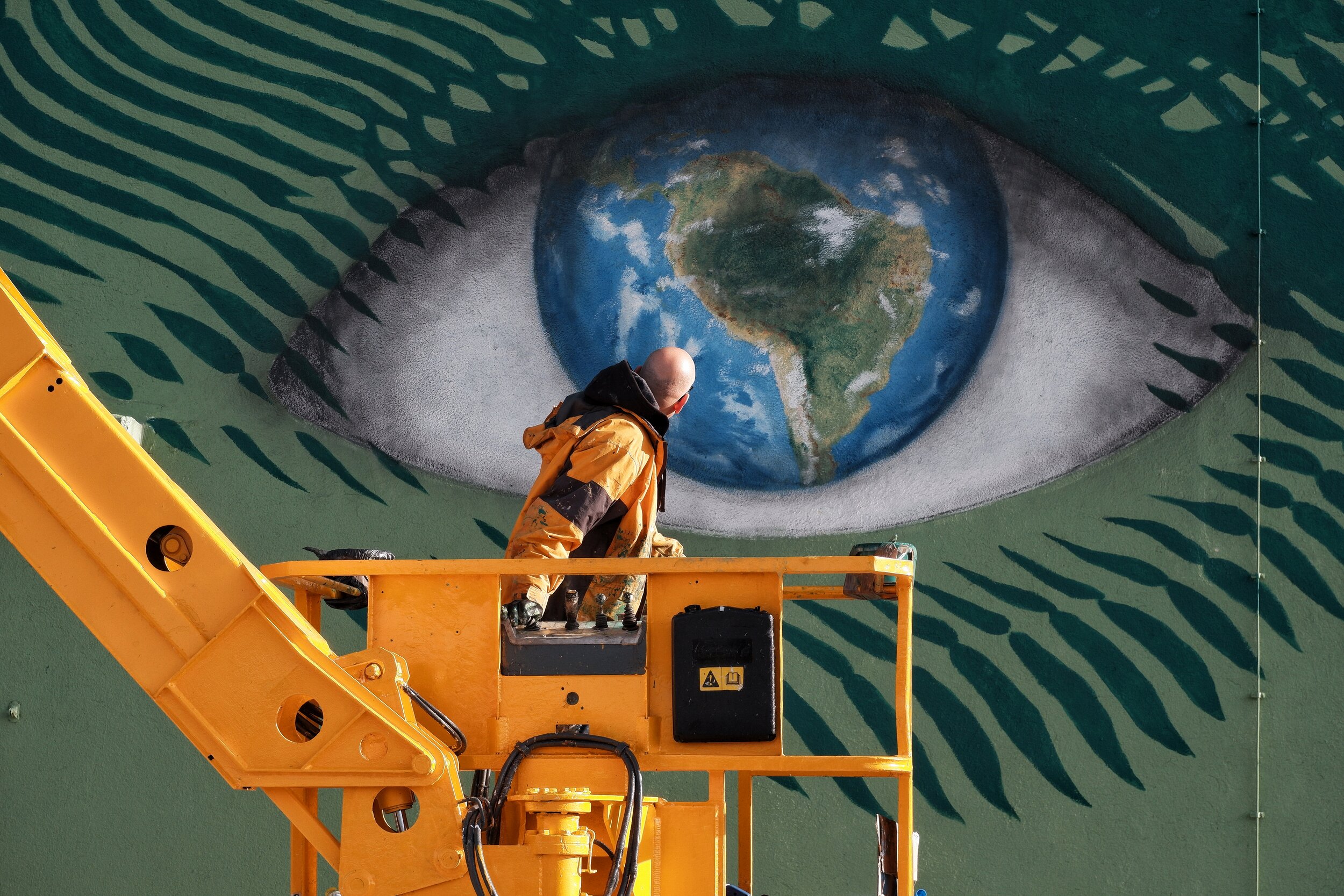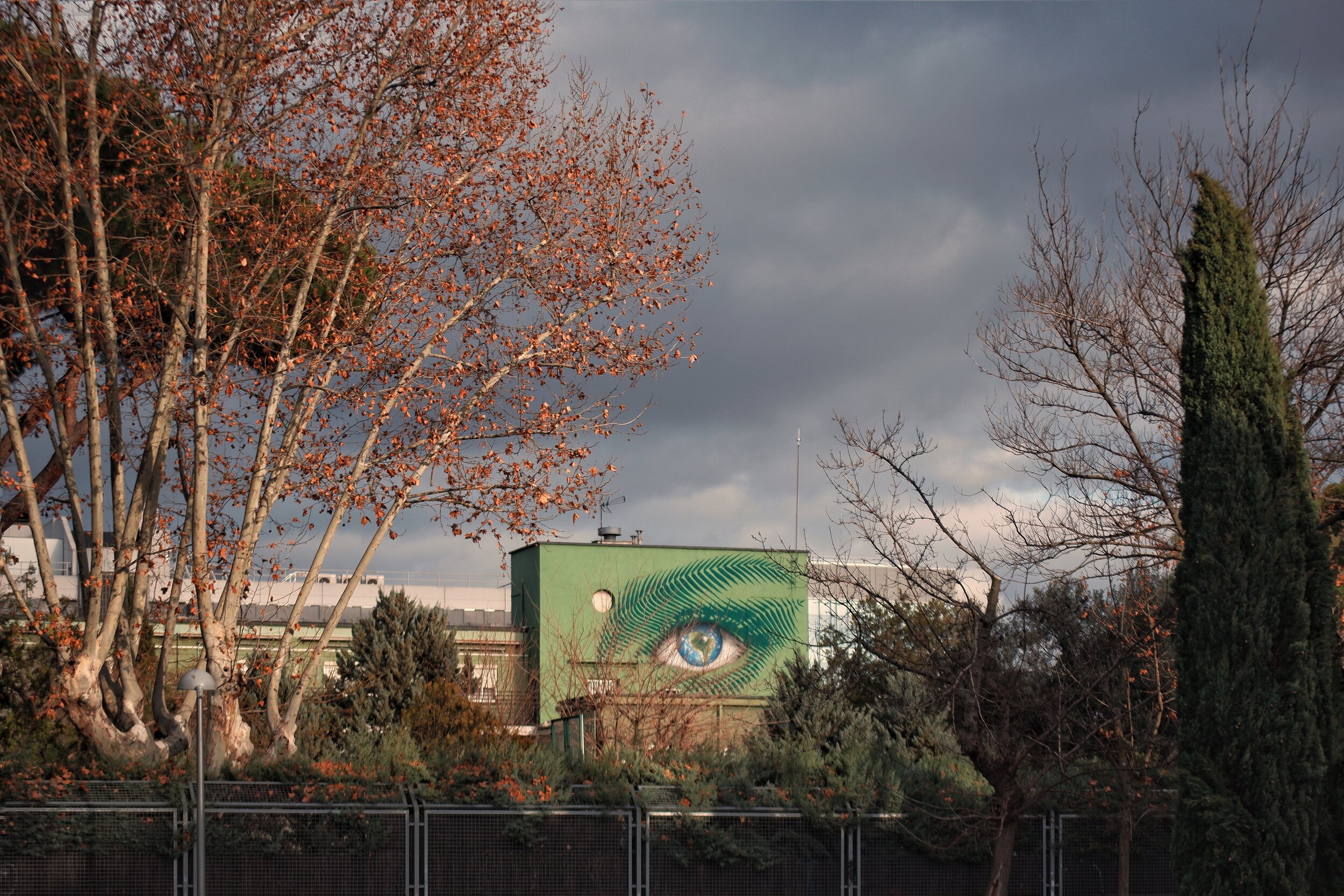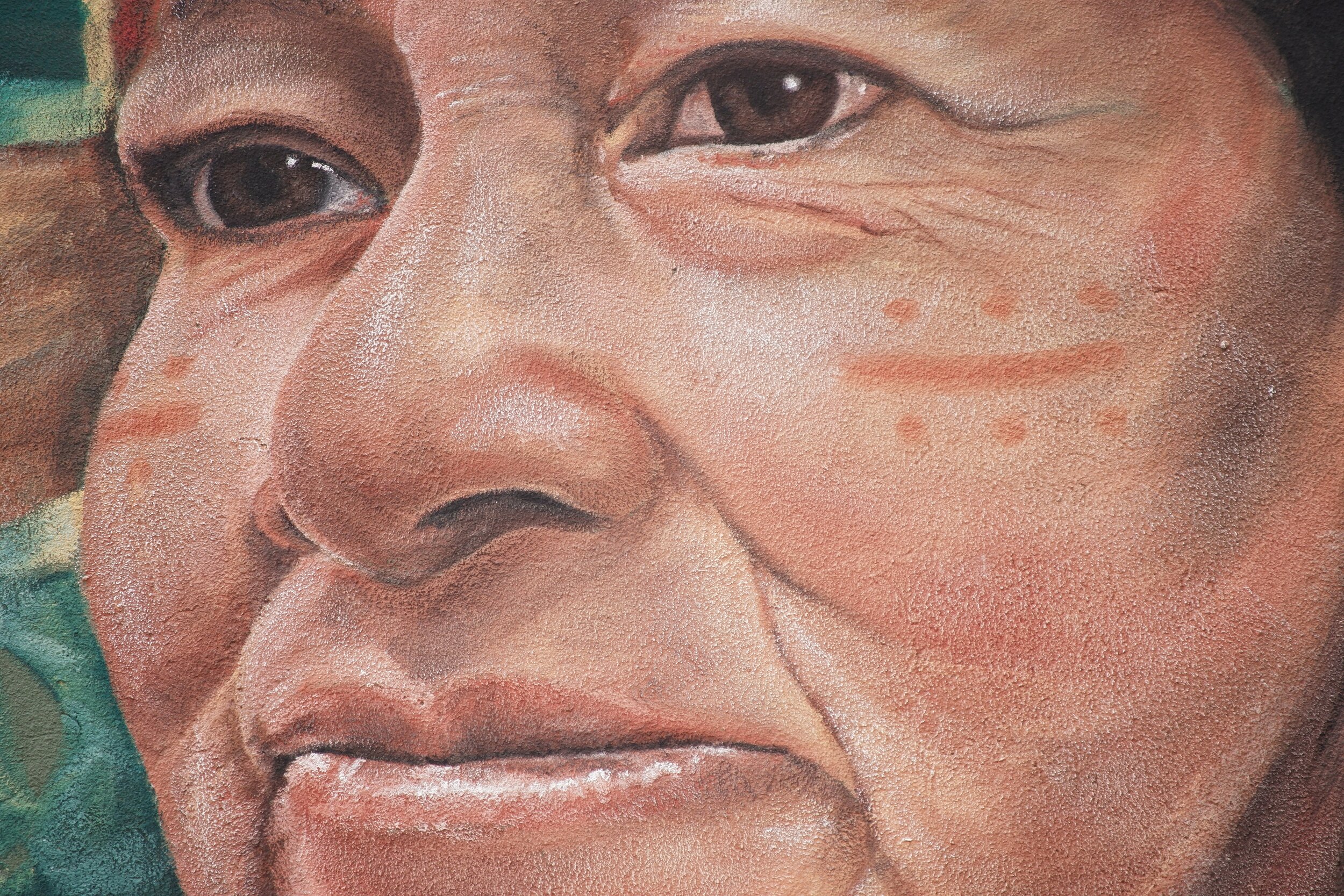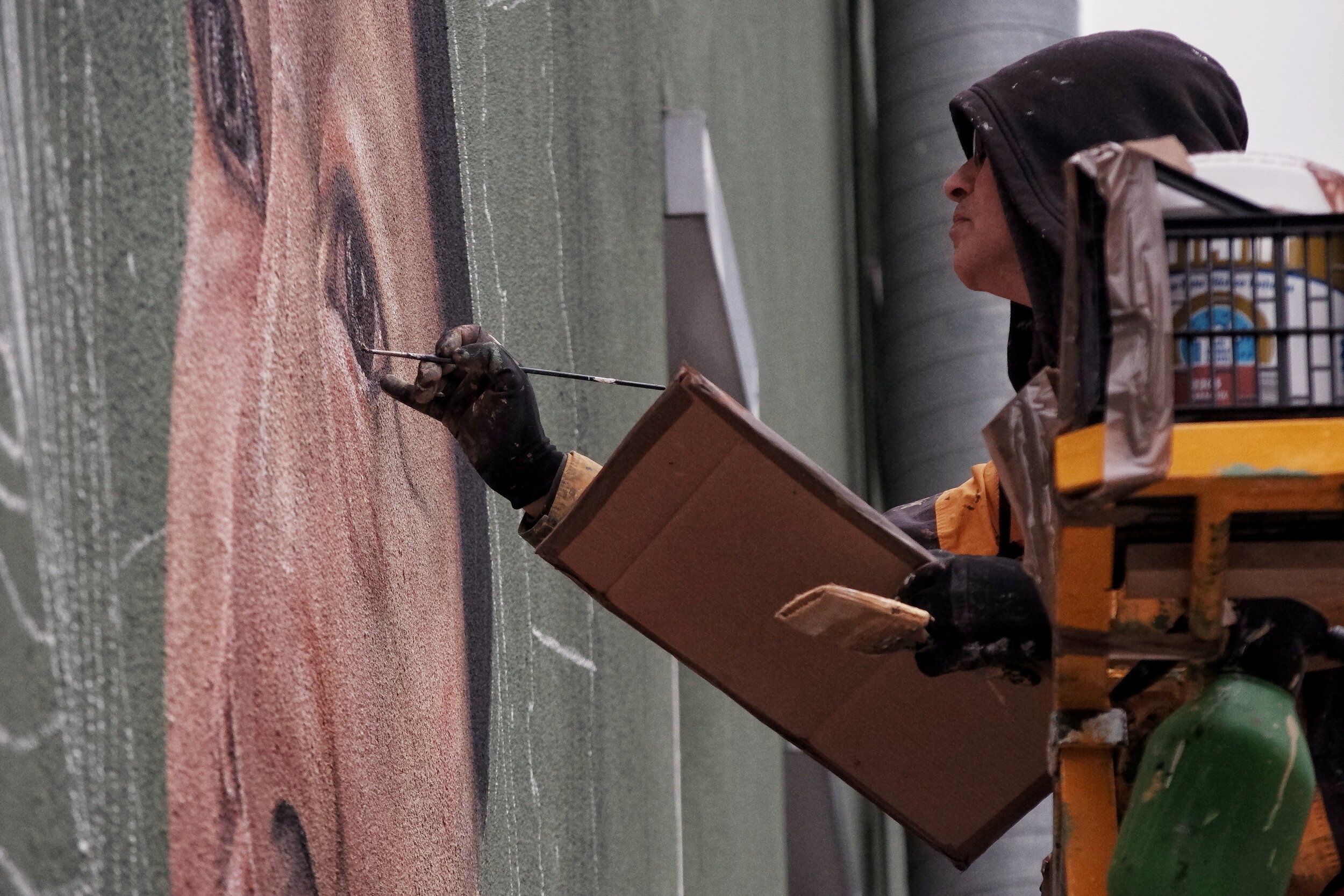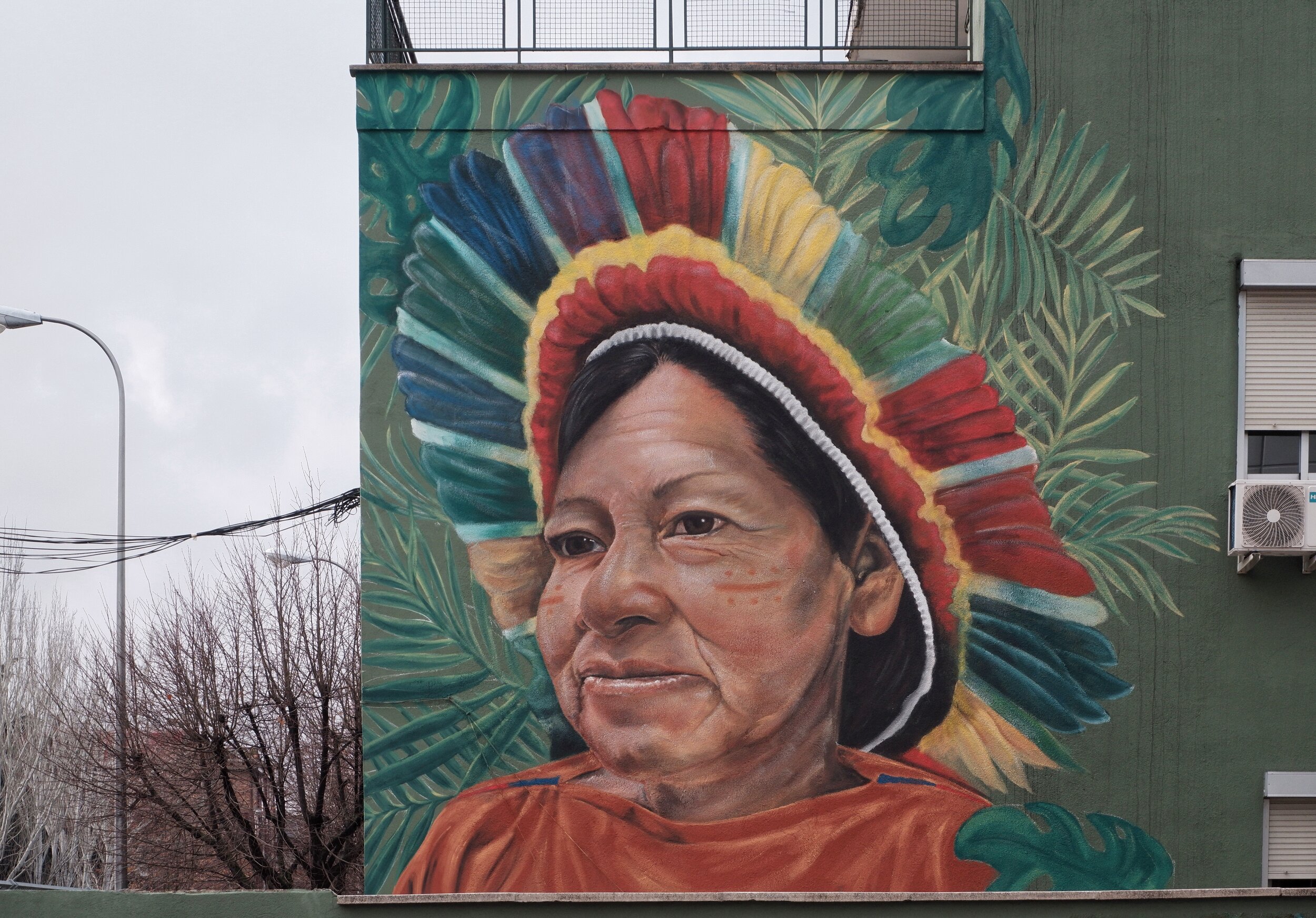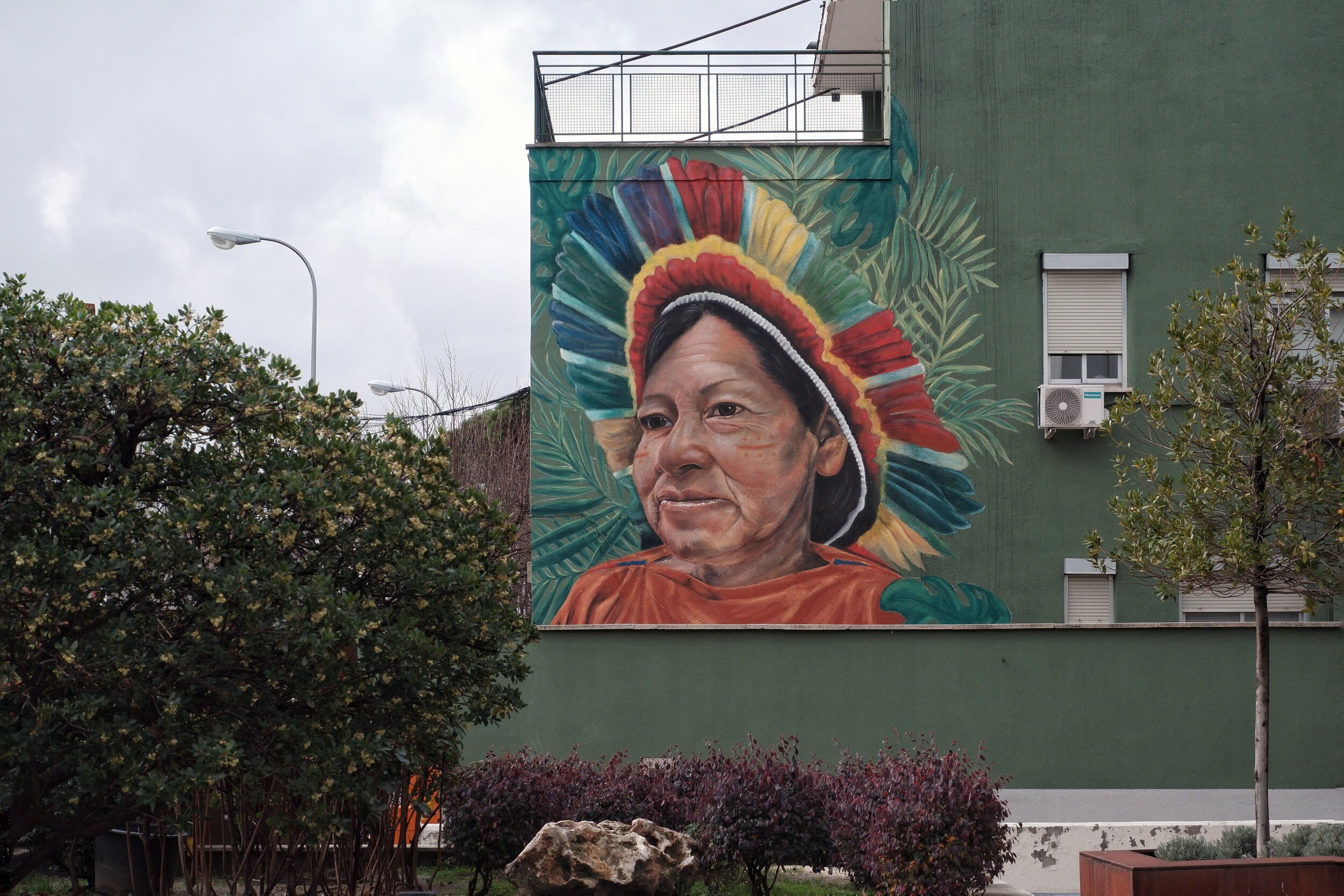New Street Art about Climate Change, Indigenous People, and Nature-based Solutions for the UN Climate Conference COP 25
During the 25th United Nations Framework Convention on Climate Change Conference of Parties (COP) 25 in Madrid, Spain, GreenPoint Innovations has teamed up with street artist Jorge Rodríguez-Gerada for its first international climate #ArtPlusPurpose activation: ‘GREENPOINT EARTH MADRID 2019’, to help communities worldwide learn about and act on climate change. Curated by Stephen Donofrio and with financial support from National Wildlife Federation International and Arbor Day Foundation. GREENPOINT EARTH MADRID was designed to bring the climate change story to life with a focus on indigenous people as Planet Earth’s most dependable defenders.
Photos: Fer Alcala
Watch the Videos
The art was a part of a broader program of innovative engagement activities showcased at COP 25 (see below) that were supported by local and global organizations including the City and Community of Madrid, UNFCCC, National Wildlife Federation International, Arbor Day Foundation, and Forest Trends.
Our Collaborators
GreenPoint EARTH MADRID received support from the City of Madrid, strategic assistance and funding by the National Wildlife Federation International, sponsorship from Arbor Day Foundation, and guidance from Beto Borges of Forest Trends, and communications support from the United Nations Framework Convention on Climate Change.
+ What's the Point?
Located at Centro Ocupacional "Ciudad Lineal" / (eng. Occupational Center in “Ciudad Lineal” neighborhood of Madrid), a center for people with intellectual disabilities. Aligned with the spirit of helping communities learn and take action on climate change, as this freely offered facility is dedicated to helping people in the development of “professional, personal and social skills.”
Featured in one mural is Hilda Pérez, a leader of the Indigenous Ashaninka Community located in Peru and Vice President of the National Organization of Andean and Amazonian Indigenous Women of Peru (ONAMIAP). ONAMIAP was founded on November 25, 2009, the International Day Against Violence against Women, as a result of a long process of formation, debate and articulation between sisters from different regions.
What do Indigenous People Have to do with Nature?
"Recent articles have stated that about 370 million indigenous people live across 90 countries. Indigenous peoples currently occupy, own, manage or have land tenure over 25 - 50 percent of the Earth’s land. However, legal ownership of these lands is only 10%, as many indigenous communities aren’t able to prove in court that the land they’ve occupied for hundreds of years is legally theirs, leaving an opening for industries to establish claims or annexations of ancestral territories for resource exploitation. Source: UN
“To stabilize the forest frontier, we need to invest directly in the communities living there. Indigenous and traditional communities control one-third of remaining tropical forests. In the Amazon, the largest tropical forest on the globe, they own 210 million hectares (or some 519 million acres). As a direct result of their stewardship, deforestation rates are just 0.2% on average, even less than that of protected areas (1.4%). Their stewardship keeps 51 GT of CO2 from being emitted into the atmosphere, a huge contribution to avoid and revert climate change.” Source: Forest Trends
In the past, settlers have banned indigenous people from exercising their customary land use practices, forcibly removing both the people and these practices from the land. With the climate crisis in full effect, governments must recognize the unique and impactful perspectives that indigenous communities bring to environmental conservation, and include these communities to collaborate on solutions.
It is now clear that the knowledge and intergenerational involvement of indigenous people is a resource that directly curbs the impacts of climate change.
It’s time to act on climate change together.

